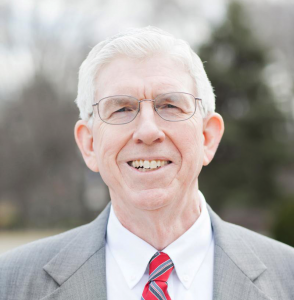This article is part 13 in a series by Tom Nettles on Remembering Jesus Christ. (Part 1, Part 2, Part 3, Part 4, Part 5, Part 6, Part 7, Part 8, Part 9, Part 10, Part 11, Part 12).
The orthodox party of Nicea prevailed for less than a decade. Challenges to the formula of Nicea soon began to multiply. For a brief period, Arianism was made the received doctrine of the empire.
Two other theological issues arose that called for closely reasoned biblical exposition. One concerned a construction of the human nature of Christ that compromised his full humanity by eliminating his human reason, human will, and thus, all true human initiative. This was propounded by Apollinarius. His zeal for the deity of Christ and the necessity of his sinlessness and incorruptibility led him to deny that Jesus had a human soul (thus no human reason, and will, and motivation).
Another issue concerned the person of the Holy Spirit. Was he a creature or was he, like the Son, of the same essence with the Father? Those who claimed the Spirit’s works were the works of a creature were known as “Fighters against the Spirit.”
The Emperor Theodosius I called a council in 381 at Constantinople in order to reaffirm the theology embraced at Nicea fifty-six years earlier and to give closure to the controversy over the Holy Spirit and the humanity of Christ. The creed of Nicea was reaffirmed with several phrases inserted to give clarity to the person and work of the Holy Spirit. We find, “by the power of the Holy Spirit he became incarnate from the Virgin Mary, and was made man.” Also, we find, “We believe in the Holy Spirit, the Lord, the giver of life, who proceeds from the Father [and the Son]. With the Father and the Son he is worshipped and glorified. He has spoken through the Prophets.” The phrase, “And the Son,” filioque in Latin, was added to the western version of this creed during the time of Charlemagne. It affirms the double procession of the Holy Spirit in eternity who is, even as love flows eternally and personally between Father and Son, “the perfect bond of unity” (Colossians 3:14).
Although the Constantinopolitan creed gave a measure of balance to affirmations concerning the persons of the Trinity and locked Arianism outside the pale of orthodoxy, it did not give a detailed synopsis of the relation of the uncreated (God) to the created (man) in the person of Christ. That the eternally generated Son of God had taken to himself real humanity was now beyond dispute. The manner of this assumption of the human nature, however, and the appropriate words to use in asserting this truth still seemed to elude a clear, biblically defensible, theologically sustained definition.
Nestorius, bishop of Constantinople, in response to a Mary-cult developing in his diocese, found it absurd to use the word theotokos, God-bearer, for Mary. He preferred the term christotokos, Christ-bearer. While firmly sustaining both the human and the divine, conscientiously resisting the tendency to fuse, and lose, the human into the divine nature, Nestorius was perceived as erring on the other side. It seemed that he maintained such an individuality in the human nature that he treated the nature as a person. He viewed the union as one only of undivided moral purpose, or a divine indwelling of the man born of Mary. His was a kind of high adoptionist Christology.
Cyril, bishop of Alexandria, kept the pressure on Nestorius insisting that he anathematize the positions attributed to him. To mke his position clear, Nestorious should affirm, “If anyone does not confess that Emmanuel is God in truth, and therefore the holy Virgin is theotokos—for she bore in the flesh the Word of God become flesh—let him be anathema.”[1] Unable to consent to this anathema, Nestorius was exiled after the Council of Ephesus (431).
Cyril’s language, however, gave rise to a group known as Monophysite (one nature) and Monothelite (one will). They contended that Christ, because of infinite greatness of his deity, had only one nature. The humanity was like a drop of honey absorbed into the ocean. In this vein of thought, Eutychus declared, “I confess that our Lord was of two natures before the union, but after the union I confess one nature.” This formula was resisted by Flavian, the bishop of Constantinople, and was condemned by a council in 448 that used the terminology of “two natures,” obviously protecting the full human nature, existing in the one Christ.
Eutyches, representing this as Nestorianism, with support from Theodosius II, called a synod in 449 composed of those that revered him and his theological instincts to approve his formula. Flavian’s attempt to attend this council and provide a reasoned objection resulted in his being grossly manhandled so that he died. This synod soon was termed the Latrocinium, Robbers’ Synod, by those that opposed Eutyches.
During the time of this theological, and sometimes physical, punch and counter-punch, the bishop of Rome, Leo, appealed to by both parties in this dispute, gathered enough information about what was at stake to weigh in with unusual clarity and vigor. Before Flavian’s ultimate conflict, Leo wrote him concerning his view of the issue. This letter, so profoundly practical and biblical in its content, has gained a just commendation through the centuries. Known as Leo’s Tome, its argument virtually sealed the issue concerning the relationship of Jesus’ human nature and his divine nature in the single person. When a new council was called in 451 at Chalcedon to revisit the Eutychian problem, Leo’s letter was read. Many of those in attendance greeted its reading with the words, “Peter has spoken.” This should not prejudice those who reject the papal primacy or the Petrine succession of Rome against the power of the reasoning and synthesis of biblical truths present in this document. Edward Hardy wrote, “It is a fine specimen of the straightforwardness and clarity of the Latin mind—as also of the Western approach to the mysteries of Christianity from the facts of faith rather than the speculations of philosophy.”[2]
Leo’s reasoning, in fact, from the commonly accepted confession of Christians and the biblical material concerning the incarnation of the Son of God is tightly constructed and profound. The argument is Bible-centered and doctrinally coherent.
Leo said that if Eutyches “was not willing, for the sake of obtaining the light of intelligence, to make laborious search through the whole extent of the Holy Scriptures,” at least he should have learned from the common confession, particularly the implications of its words, “His only Son, our Lord, who was born of the Holy Spirit and the virgin Mary.” Failing that, he should submit to the implications of the gospel descriptions of the person and work of Christ which show that “in the entire and perfect nature of very Man was born very God, whole in what was his, whole in what was ours” except for the corruption of sin.
As for the formula set forth by Eutyches (“out of two natures into one”), Leo indicated the greatest disdain. “I am astonished,” he told Flavian, “that so absurd and perverse a profession as this of his was not rebuked by a censure on the part of any of his judges [in 448], and that an utterance extremely foolish and extremely blasphemous was passed over.” Leo noted that it was just as impious to say that the only-begotten Son of God “was of two natures before the incarnation as it is shocking to affirm that, since the Word became flesh, there has been in him one nature only.”[3] How could two natures exist in the Son of God prior to the incarnation? Also, how could one that was not fully man as a result of the incarnation ever reclaim for humanity the moral image of the divine and the warrant to eternal life?
A method of biblical citation emerges in Leo’s letter that helps the student of the Bible with an important principle of interpretation. His synthesis of texts employs a theological observation called the communicatio idiomatum—the fellowship of peculiar properties. This means that many texts in the Bible which would otherwise be confusing are perfectly clear when one sees the integrity of two natures in one person, Jesus Christ. Often Scripture asserts an action or attribute of one nature that, strictly speaking, holds true only for the other nature. Such is Paul’s statement in Acts 20:28, “to feed the church of God which he purchased with his own blood.” God does not have blood, but the person who purchased the church by his death, did have blood and also was God. The same inference we draw from the words of Jesus in John 3: 13: “And no man hath ascended up to heaven, but he that came down from heaven, even the Son of man which is in heaven.” Jesus had never been in heaven as Son of man, but as Son of Man he is the same person that as Son of God had come down from heaven. Even at that moment, as he spoke, as Son of Man united in person with the eternally generated Son of God, he was in heaven. Though he stood before Nicodemus, isolated in time and space by his body and by every property of his humanity even as Nicodemus himself was, unlike Nicodemus, he also resided in heaven. As he spoke, his eternal generation from the Father, an eternal and immutable property of his personhood as Son of God, explained the meaning of “which is in heaven.” The communicatio idiomatum gives the key to a proper grasp of such a text.
Sometimes Scripture will indicate a condition of the whole person that is true only of one nature (“Before Abraham was, I am” John 8:58). These kinds of texts are the seed bed for the theology of two natures in one person, and, once established, the theology becomes a principle of interpretation for a large number of texts. For example, consider the following used by Leo himself in the famous “Tome” in which he argued and illustrated that in this single person “the lowliness of man and the loftiness of Godhead meet together.” Though it does not belong to the same nature, it is true of the same person, to say, “I and the Father are one” and to say, “The Father is greater than I.” We find clearly stated the same mysterious truth in Paul’s statement, “For had they known it, they would not have crucified the Lord of Glory?” When Jesus asked who he the Son of Man was, why does he commend the answer, ”Thou art the Christ the Son of the living God?”
Leo also kept pressing that the ontology of the person of Christ served the interests of the salvation of sinners, “because one of these truths, accepted without the other, would not profit unto salvation.” It would be equally wrong, as well as dangerous to the soul, to believe the Lord Jesus to be God only and not man, or man only and not God.
At the time of the Olivet discourse, Jesus made the puzzling affirmation, “But concerning that day and hour no one knows, not even the angels of heaven, nor the Son, but the Father only” (Matthew 24:36). Jesus, speaking by the Spirit and in his humanity, had been isolated from that knowledge. He could state with perfect accuracy and verity that, in his perfect manhood, the Son did not know what the Father had decreed concerning the coming in glory of the triumphant, risen, ascended, redeeming Son of Man (37, 39, 44). In his humanity, Jesus increased in wisdom. His knowledge and his perfect ability to apply it continually increased throughout his life as the man who was being perfected, that is, brought by degrees to a full and immutable righteousness (Luke 2:52; Hebrews 5:8). This event was hidden even from him, in that peculiar capacity, at this time.
In his commentary on Matthew, John A Broadus observed: “If there was to be a real incarnation of the Eternal Word, then the body he took must be a real body, and the mind a real mind. How his divine nature could be omniscient, and his human mind limited in knowledge, both being united in one person, is part of the mystery of the Incarnation, which we need not expect to solve.”
If Christ in his perfection of moral rectitude and full commitment to all that the Father willed, had this event hidden from him at this time, and yet trusted fully even though he would go through the torturous propitiatory death, how willingly and joyfully should we submit to the mystery of our future with absolute trust in a faithful creator and Father. In this way, we “Remember Jesus Christ” and emulate his submission to and trust in the Father’s wisdom and will.
[1] Hardy, Christology of the Later Fathers, 353
[2] Hardy, 359.
[3] Hardy, 359-370.
This article is part 13 in a series by Tom Nettles on Remembering Jesus Christ.




















